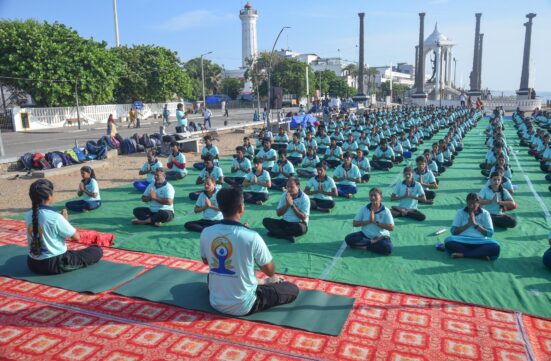Salutogenesis and Yoga Therapy

Posted by: Ananda Balayogi Bhavanani
Salutogenesis, may be defined as all the factors involved in manifesting and sustaining a sense of wellbeing and wholesome wellness. The equivalent concept in Indian tradition is “Swastha” that implies a sense of being at ease with oneself. Acharya Sushrut (~600 BC) defined this positive sense of wholesome wellness as a “dynamic balance of the elements and humors, normal metabolic activity and efficient elimination coupled with a tranquil mind, senses and contented soul” (Bhavanani, 2013).
The wholeness of personhood involves physical, emotional, intellectual, social, and spiritual aspects of human experience and Yoga as a therapy helps achieve this dynamic state of wholesome wellness. The Indian tradition of healing understands health and well- being as a dynamic continuum of human nature and not a mere ‘state’ to be attained and maintained. This is in tune with the concept of eudemonia described by Aristotle as a “well-lived” life that fulfills a person’s ultimate purpose and gives them meaning. This can be correlated to concepts of self-actualization (Abraham Maslow), Ikigai (in Japanese culture) and Swadharma (in Indian culture).
Antonovsky proposed that the experience of well-being is based on a “Sense of Coherence”. This can be considered the heart of Salutogenesis (Antonovsky, 1979). The comprehension, meaningfulness and manageability (SOC approach) in chronic diseases enables “wellness” to manifest despite limitations and is similar to the “physically disabled” becoming “differently abled”.
As a Yoga therapist, we need to communicate with our clients in such a way that these three aspects come alive. It is only then, that the health promoting aspects of healing start to manifest in them. We as a friend and guide need to help them comprehend their life better. This is only possible if we truly ‘know’ them. This takes time and patience.
Can we help them tap into their own potential to manage their life? Often people are not aware of their inherent capacities and potential and it is we as an external observer who can help them understand it.
We need to help them move from a state where “being healthy” seems “impossible” to one of a confident “I Am Possible”. This is where the very stressor in their life becomes a catalyst for transformative positive health.
To live a healthy life it is important to do healthy things and follow a healthy lifestyle. Yoga places great importance on a proper and healthy lifestyle whose main components are: Achar (healthy activities), Vichar (healthy thoughts and attitudes), Ahar (healthy, nourishing diet), Vihar (healthy recreational activities) and Vyavahar (healthy relationships).
Yoga has a step-by-step method for producing and maintaining perfect health at all levels of existence. Social behaviour is optimized through mindful restraint of lower subhuman tendencies (Pancha Yama) and enhancement of humane qualities (Pancha Niyama). The body is disciplined through body postures known as Asana. Universal energy that flows through body-mind-emotions-spirit continuum is potentiated through the breathing process in Pranayama. Externally oriented senses are withdrawn inwards through Pratyahara and the restless mind is focused through concentration (Dharana). If these six preceding steps are practiced, the seventh, Dhyana or meditation will manifest. Intense meditation produces Samadhi, the sense of Universal Oneness.
This can be understood as the perfect state of integration or harmonious health.
References:
Antonovsky A. Health, Stress, and Coping. San Francisco and London: Jossey-Bass Publishers; 1979.
Bhavanani AB. Yoga Chikitsa: Application of Yoga as a therapy. 1st ed. Pondicherry, India: Dhivyananda Creations; 2013.